Train the way you play: Jim Radcliffe
3 Comments“Go hard, Go Fast, Finish it, Go Again”
This sums up Jim Radcliffe’s approach to training teams at Oregon University. His lecture at GAIN V on his training system was a masterclass in how to organise and plan. The Jim Radcliffe workouts are efficient from beginning to end.
This was not some periodisation lecture, instead it showed the different aspects that need training, and how they connect with each other. Radcliffe showed the different roots and branches of what is needed and why.
His lecture last year looked more at the weekly and monthly cycles. This looked at more of the progressions that fit into those cycles.
Musculo skeletal health 101
Radcliffe started by linking the different aspects of fitness that are interconnected using Frank Dick’s model (1984 Pictured below)
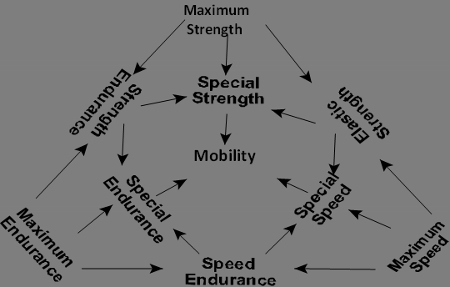
He has changed this slightly and replaced mobility with movement efficiency, and uses a pyramid analogy instead of a triangle. Radcliffe wants his players to be around as long as the pyramids have been!
He then gave his view of what physical state his college players are when they arrive. As we all find, they have:
- poor mechanics
- poor understanding of their own body
- poor hip mobility (too much time in seated postures)
- weak torsos
- poor knee, hip and ankle integrity.
(Posture coming up time and time again).
These areas must be addressed before anything else. “We must be prepared to teach, train and develop not from scratch, but from behind zero.”
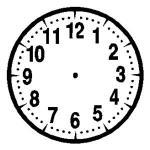 Radcliffe used a clock diagram on several of his slides asking “what percentage of time is spent..?”
Radcliffe used a clock diagram on several of his slides asking “what percentage of time is spent..?”
On this first part, it was how much time should be spent on sitting or lying exercises that work on 1or 2 joints or muscles in isolation compared to standing exercises that are multiple joint and require synchronisation?
“Running is a skill..”
..”in fact, it should be the main skill, and it needs to be taught”. Poor postures, lifestyles and inadequate teaching have left the players unable to run.
The exercises and progressions in the gym should be able to assist and enhance this, rather than inhibit it. Radcliffe uses a small battery of tests/ screening exercises to assess what the players can do, rather than what they can’t do.
He then leads into a progression of hip actions:
Hip Hinge- Hip projection- Whip from the hip
This is done in the gym and on the field. Everything must work together.
Acceleration, Acceleration, Acceleration.
“Did I mention we do a lot of acceleration?” Radcliffe keeps working on this “until we get better and more efficient. Otherwise we are just running for running’s sake. Get better, then repeat it.”
This was really the central thrust of the Oregon system. Instead of doing drills for drills sake, the coaches are asked to train skills and get them working well. This sounds a lot more like “Coaching” rather than “instructing”.
(For those of you not familiar with College Football, Oregon have been notorious for playing fast and furious football. Other teams struggle to keep up).
Warm Up is a chance to rehearse skill
Radcliffe espoused the use of the warm up as a chance to rehearse skill. It should not only do the physiological things that are necessary, but also be enabling skill.
What you do 6 minutes before the game should build on what you did 6 hours, 6 days, 6 weeks and 6 months before.
Do you Stretch/ Manipulate or do you Move before matches? (Static stretching is still common place in team warm ups at College football.)
He then showed some great data on different warm up protocols and their effect on performance. Total synchronised body lifts that moved load at speed (The snatch) helped prepare the body better than just dynamic warm ups.
(For the younger readers, you might think “we know this” but who do you think has led the field in questioning previous practices? More on dynamic warm ups here)
Mass- Specific Force
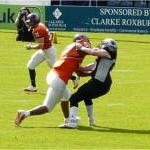
Ex Excelsior athlete Elliot Hoyte
Are you moving mass just to move mass? Or does it have an application on the field? (We know where the UKSCA paradigm is on this! Jack Blatherwick on application of power in sport)
Force ends up displaying itself on the field on 1 small spot like the ball of the foot (See Elliot Hoyte getting past the lineman right) so it must be applicable strength.
Great force is exerted over a small base of support and rapidly. Training must replicate this and also work on the righting/ tilting reflexes that happen when the athlete is in the air or lands.
- Get ’em strong
- Train Rate of Force Development
- Dynamic Strength
My understanding from this year and last year is that Radcliffe incorporates application into every session, but to varying degrees. If maximal strength is being developed, at least 1-2 exercises at the end are used to help the body apply it.
Gassers vs Get Offs
“How much time is spent on Biomechanical Performance Technique vs Mental Toughness Training?” In other words is your training designed to replicate and encourage great technique and efficiency, or is it just making your players tired?
(For Non US readers a gasser is a Football conditioning drill that requires players to run 2 widths of the pitch, rest and repeat. A Get off is working the first 2-3 steps of a start, so a 5-10 metre acceleration drill).
Radcliffe gave examples of wrestling coaches who insisted on their players doing a 13 mile run once a fortnight for “mental toughness”. When you step onto the mat you want to be sure you are technically, tactically superior, not that you can last longer on a 13 mile run (Or we may as well get Mo Farah to wrestle!).
This applies across all sports, because someone has analysed the total distance covered in soccer/ basketball matches as 10km (roughly) coaches think you have to go out and jog for 10km!
What this means is that poor running mechanics are rehearsed, the overstriders over stride and then hamstrings are torn when sprinting.
Instead, work on the quality of the movement, then increase the reps, or sets or frequency of the training. This allows the players to repeatedly produce quality work.
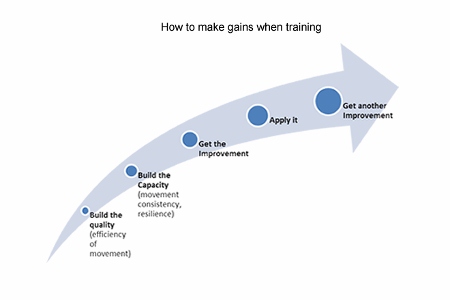
The same applies in the gym: Radcliffe knows the stuff works because if you ask an athlete to do their own training it consists of a lot of steady state running, bench press and bicep curls.
Because they are easy to do!
Programme Objectives (Jim Radcliffe workouts in action)
The Oregon long term objectives are to develop:
- Explosive Power
- Functional Strength
- Directional Speed
- Transitional Agility
In the Short Term they work on:
- Power Reliability (used to call it power endurance)
- Work Capacity (The ability to do more intense work, or more load, finish it, recover, go again)
- Recoverability
- Stamina
Radcliffe broke the Programme components down and showed how they inter relate with Preparational Work- Technical Work- Developmental Work and then Transitional Work and their various sub divisions.
This was quite enlightening and showed the system behind the various exercises.
The Programme emphasis is to put the players in situations where the drill forces the body to learn and adapt. This is a key coaching point and shows the importance of what we do.
(As an aside, if, as an S&C coach, you just get your players to do lifts for lifts sake and do not work with the coaches, you will get isolated and not be aiding the players get better for where it counts. You must coach.)
Summary
Once again this session highlighted why Radcliffe is at the top of his game. He has created a system over the last 26 years that is very thorough and specific.
He understands the importance of application in the game situation and knows how to get his players there.
He has researched the different aspects of power, strength, speed and agility and is continually looking to evolve his programme. This has been done with real athletes across different sports over many years.
In combination with his superb practical demonstrations, Radcliffe makes me want to improve my delivery, my planning and my thinking. I have incorporated many of his ideas into our pre-season training plans
Inspirational.
Further reading:
- Jim Radcliffe strength and power concepts
- Jim Radcliffe agility with a purpose
- Jim Radcliffe pliometric progressions



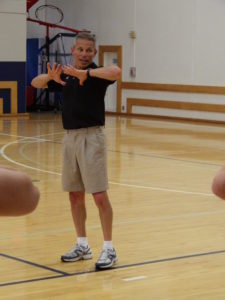
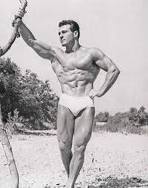 I am sorry to hear that Jack Lalanne has died. For those of you that don’t know Jack, he was a legend in the 1950s and 1960s, producing a series of TV slots that still resonate today.
I am sorry to hear that Jack Lalanne has died. For those of you that don’t know Jack, he was a legend in the 1950s and 1960s, producing a series of TV slots that still resonate today.
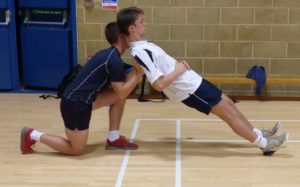
 To finish off the blog festival, Jack Lalanne has kindly sent this quote:
To finish off the blog festival, Jack Lalanne has kindly sent this quote: